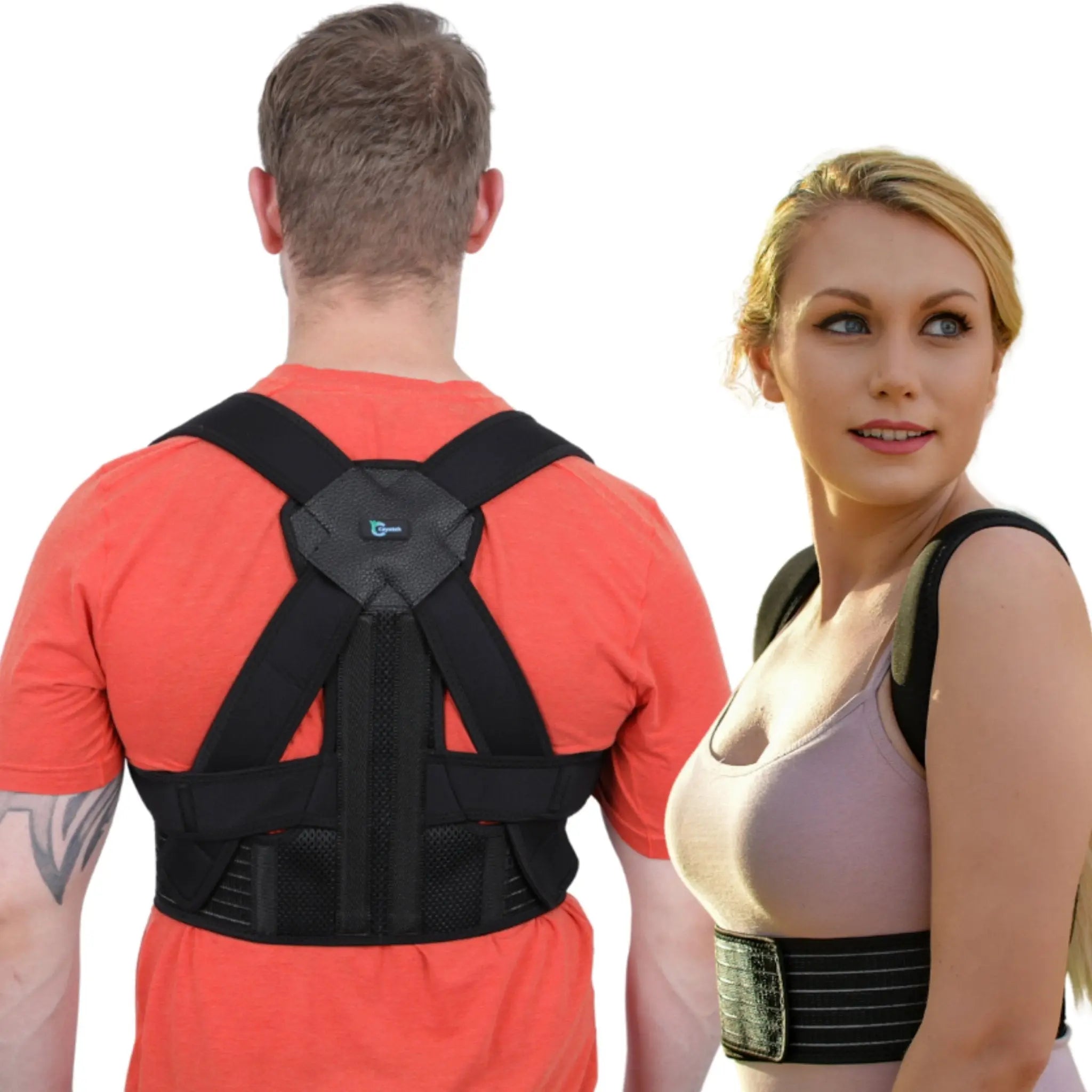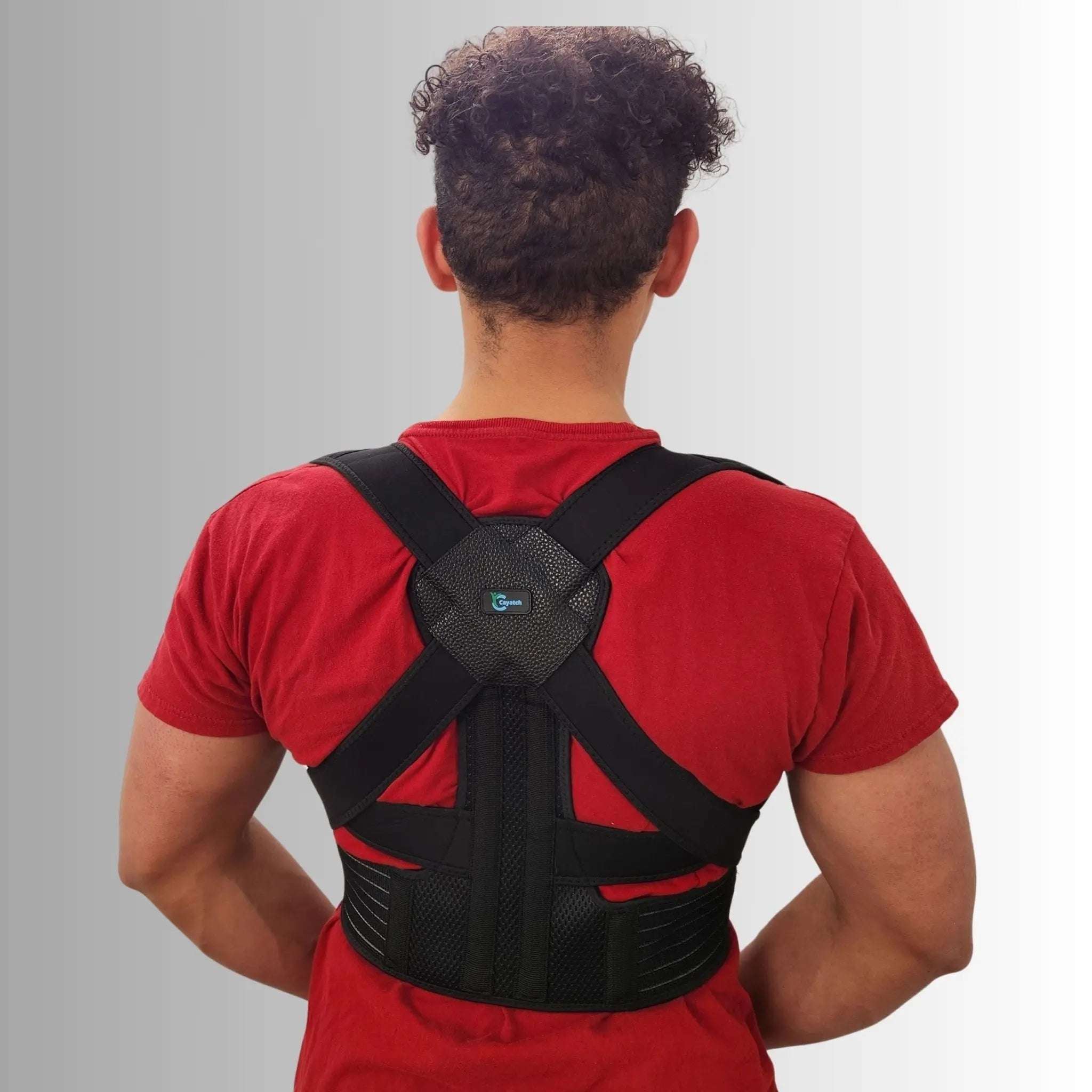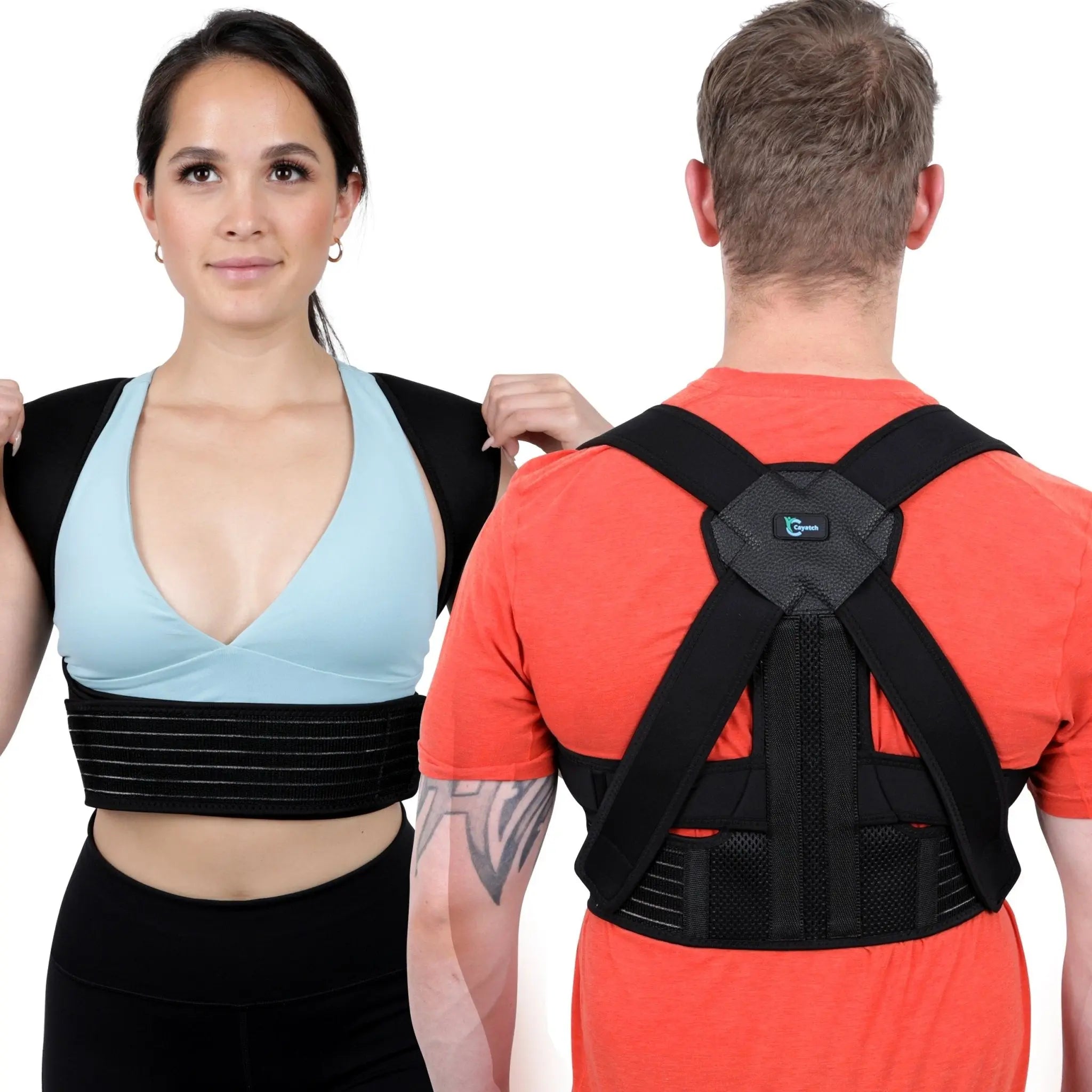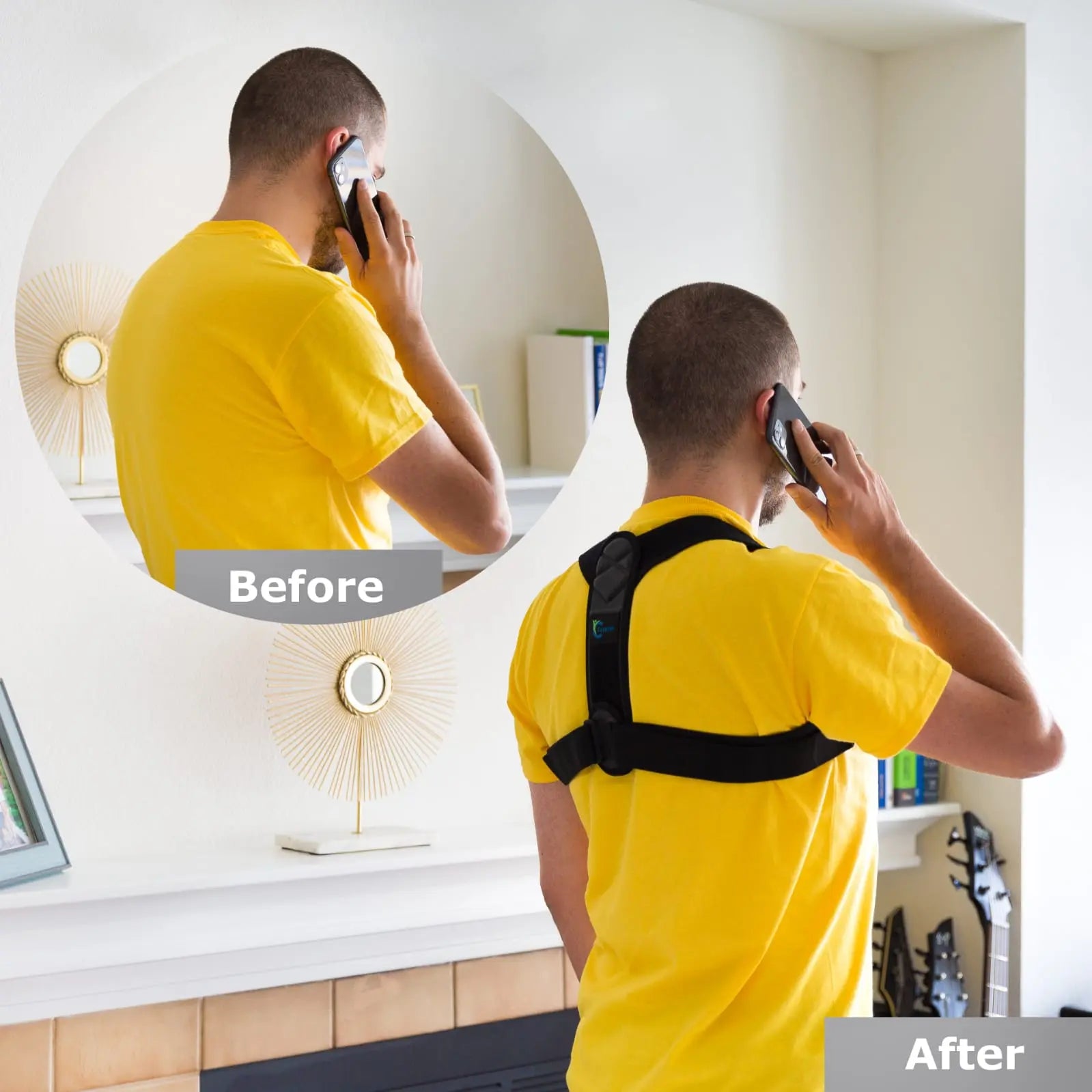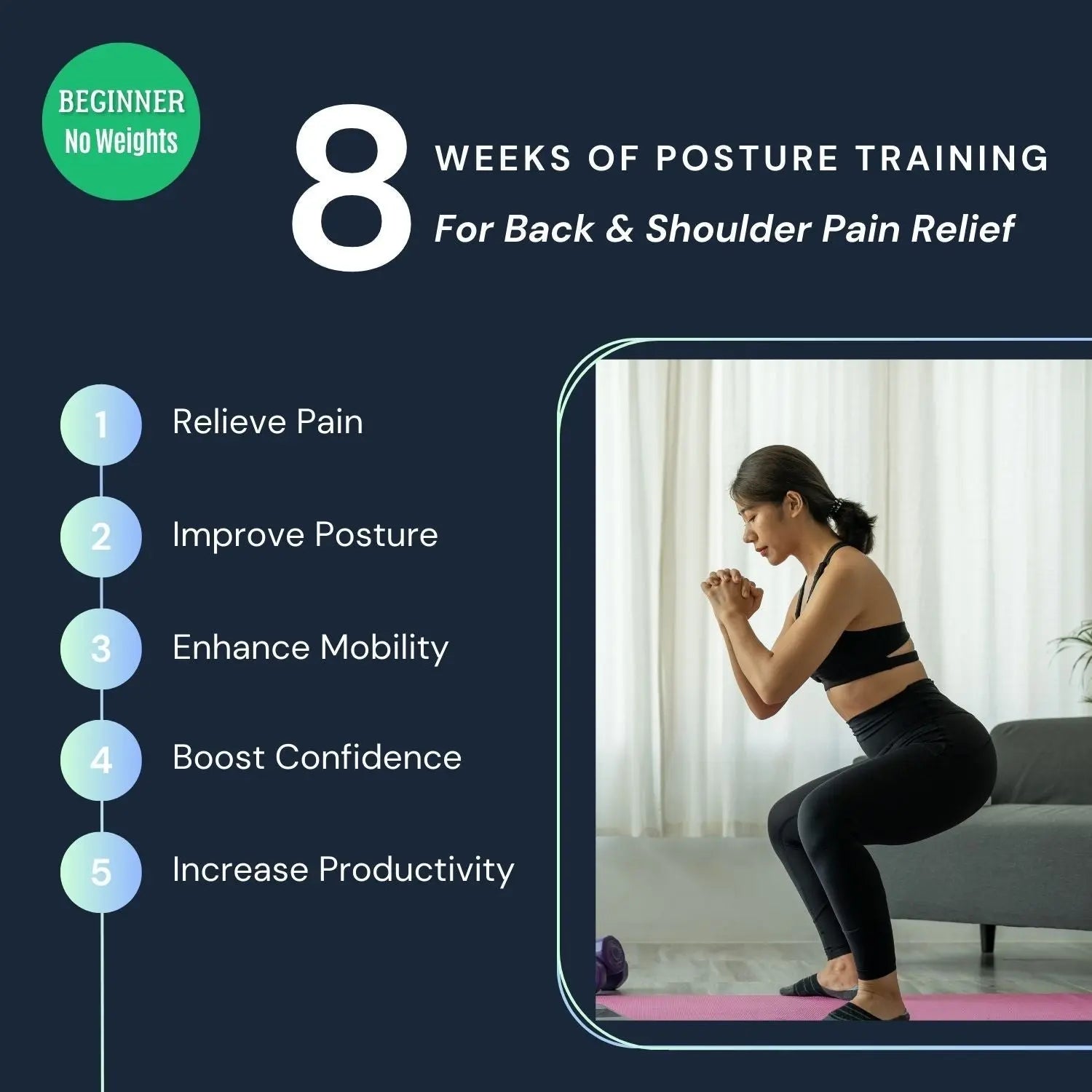How To Improve Posture With Resistance Bands? Expert Tips

Good posture has a significant impact on our health and moods. Proper posture can help prevent musculoskeletal issues and injuries and boost self-esteem.
Luckily, improving and keeping a good posture doesn't have to be difficult. Resistance bands are valuable tools for performing various exercises that specifically target core and back muscles.
These exercises expedite the improvement of posture more effectively than other workout methods. If you're struggling with rounded or slouched shoulders, incorporating a resistance band into your routine can be highly beneficial.
As your posture gradually improves, you can easily increase the resistance level for a more challenging workout.
In this article, we will delve into the usage of resistance bands, the exercises you can incorporate, and their contribution to posture enhancement.
What Are Resistance Bands?

Resistance bands, also known as elastic bands, latex bands, or rubber tubes, are commonly utilized in fitness and strength training due to their adaptable resistance properties when stretched.
These bands offer users a selection of resistance levels, band sizes, and shapes to cater to their individual needs and fitness levels.
Benefits of Using Resistance Bands for Posture Improvement
Whether you're a beginner or an experienced athlete, resistance bands are valuable tools for enhancing your strength, flexibility, and overall health and fitness.
Let's explore some of the key benefits of using resistance bands for posture improvement:
- Effective Posture Enhancement: Resistance bands serve as excellent tools for improving posture. While they can't be used in isolation, incorporating them into exercises targeting your core is highly effective.
- Comprehensive Muscle Activation: Resistance bands create resistance throughout the entire range of motion, engaging the muscles relevant to your posture. This helps strengthen the muscles that support proper posture.
- Sustained Upright Posture: Strengthening the targeted muscle groups enhances your ability to maintain an upright and aligned posture throughout the day.
- Enhanced Flexibility: Many resistance band stretches and exercises target the core, contributing to increased overall body flexibility and quicker posture improvement.
- Heightened Postural Awareness: Resistance band training enhances postural awareness, helping you become more mindful of how you stand and move throughout the day. This increased self-awareness often leads to improved posture.
- Versatility: Resistance bands are versatile tools suitable for various workouts aimed at improving posture, including exercises targeting the upper back, shoulders, chest, and core.
- Reduced Risk of Injury: Unlike free weights, resistance bands offer consistent resistance throughout the entire range of motion. This reduces the risk of injury associated with abrupt or jerky movements.
Adding resistance bands to your fitness routine can make a substantial difference in your journey toward better posture and overall well-being.
Resistance Bands Compared to Other Posture Improvement Methods

Resistance bands offer a flexible and dynamic approach to posture improvement by targeting specific muscle groups. Unlike passive posture correctors, they actively engage muscles, promoting the development of strength and stamina.
While resistance bands excel at enhancing muscular strength, other therapies, such as physical therapy, yoga, and ergonomic adjustments, take a more comprehensive approach, focusing on flexibility and body awareness as they address poor posture.
By incorporating resistance band workouts into these methods, you create a comprehensive plan to address and correct your posture effectively.
8 Resistance Band Exercises for Posture Improvement

Below, we've outlined some excellent exercises using resistance bands that target crucial muscle groups essential for maintaining proper alignment.
Exercise 1: Resistance Band Rows
Resistance band rows target the rhomboids, trapezius, and rear deltoids, strengthening these muscles to improve posture and maintain proper shoulder alignment.
Steps:
- Secure the resistance band around a sturdy object at waist height.
- Stand facing the anchor point and grasp the band handles with your arms extended in front of you.
- Maintain a straight back and pull the bands toward your torso.
- Slowly return to the starting position.
- Repeat for 10-15 repetitions.
Exercise 2: Band Pull-Aparts
Band pull-aparts effectively strengthen your upper back and shoulders, helping to correct poor posture characterized by slouching and rounded shoulders.
Steps:
- Stand with your feet shoulder-width apart.
- Hold the resistance band in front of you, keeping your hands shoulder-width apart.
- With your arms straight, pull the band apart by squeezing your shoulder blades together.
- Slowly return to the starting position.
- Repeat for 10-15 repetitions.
Exercise 3: Chest Stretch

The chest stretch is a simple exercise that helps release tension in the chest and counteracts slouched shoulders associated with poor posture.
Steps:
- Secure the resistance band behind you at shoulder height.
- Hold the band with your arms extended.
- Take a step forward to create tension in the band.
- Open your arms wide to stretch the chest muscles.
- Hold the stretch for 20-30 seconds.
- Repeat for 2-3 sets.
Exercise 4: Glute Bridges With Resistance Bands

Glute bridges with resistance bands strengthen the buttocks and thighs. You can increase the intensity of the workout by placing a resistance band over your knees.
Steps:
- Hang a resistance band at knee level.
- Lie on your back with your knees bent, and feet flat on the floor, arms by your sides.
- Drive through your heels, lifting your hips off the floor while maintaining a straight line from shoulders to knees.
- Keep your knees pressing against the resistance band and hold this position for a second.
- Return your hips to the starting position and repeat for the prescribed number of repetitions.
Exercise 5: Leg Lifts With Resistance Bands
Resistance band leg lifts are excellent for strengthening the abdominal core, particularly the lower ab muscles.
Steps:
- Secure the resistance band to a fixed object or use a door anchor connection.
- Stretch your legs out in front of you and wrap the resistance band around your ankles.
- Raise your straightened legs off the ground, pushing against the resistance band.
- Keep your feet off the floor as you lower yourself back down.
- Execute the specified number of leg lift repetitions to strengthen your lower abs.
Exercise 6: Hip Flexor Stretches
Prolonged sitting can lead to tightness in the muscles at the front of your hips, causing mobility issues. This exercise is highly effective for increasing hip flexibility and relieving hip stress.
Steps:
- Attach the lower end of the resistance band to a fixed object at the hip level.
- Wrap the band around your foot and ankle.
- Stand with your banded leg positioned behind you, facing away from the anchor.
- Bend the knee of your unbanded leg and take a step forward to create tension in the band.
- Gently lean forward to release tension in your hip flexor.
- Hold the stretch for 15-30 seconds on one side before switching to the other.
Exercise 7: Planks With Resistance Bands

Incorporating resistance bands into your planks intensifies the workout, enhancing the strength and stability of your core.
Steps:
- Use an ankle-height anchor point to secure the resistance band.
- Wrap it around your lower legs, just above the ankles.
- Position your elbows directly under your shoulders, assuming the forearm plank position, with your body forming a straight line from head to heels.
- Lift one foot off the ground, pushing against the resistance band's tension.
- Hold this position for a few seconds before switching feet.
- Alternate this movement until you reach your desired time goal.
Exercise 8: Squats With Resistance Bands
Squats with resistance bands are an effective way to strengthen your quads, hamstrings, and glutes, leading to improved strength and stability in your legs and hips.
Steps:
- Position your feet shoulder-width apart and step into the middle of the resistance band.
- Hold the band or handles with your hands facing inward, positioning them over your head.
- Perform squats by bending your knees while keeping your chest and back rigid.
- As you squat, press your knees outward to increase resistance from the band.
- Descend as low as possible, ideally until your thighs are parallel to the floor.
- Return to the starting position by driving through your heels.
- Perform the specified number of repetitions while maintaining proper technique.
Incorporating Resistance Band Exercises into Your Routine

Aim to incorporate resistance band exercises into your routine at least three to four times a week to enhance your posture. Each session should last a minimum of 10 minutes and can be extended as your strength and stamina increase.
Here are some suggestions for integrating resistance band exercises into your daily life:
- Start your day by incorporating resistance band exercises into your morning routine to stimulate blood flow and engage your muscles.
- Utilize short breaks from work or study for quick resistance band exercises to keep your muscles active.
- Prior to bedtime, unwind and alleviate muscle tension by performing gentle stretches with resistance bands.
- Add variety and enjoyment to your workouts by combining resistance band exercises with activities like walking or jogging.
Making Resistance Band Workouts More Engaging:

- Maintain your enthusiasm for resistance band workouts by introducing variety into your routine. There are numerous resistance band exercises, each targeting a distinct set of muscles.
- Enhance your workout experience by enjoying music while exercising with resistance bands.
- To stay motivated and focused on improving your posture, take some time to define your goals and write them down. Achieving these goals can be a powerful source of inspiration.
- Treat yourself to something enjoyable, like a tasty snack, as a reward for completing a certain number of resistance band workouts.
Frequently Asked Questions (FAQs)
Are resistance bands good for your back?
Yes, you can get better flexibility, stability, and overall better alignment if you use a resistance band.
Incorporating exercises that target your posture using resistance bands will make a good change in your posture fast.
Can I use resistance bands everyday?
No, you shouldn’t use the resistance bands every day. Instead, try using them twice or thrice a week for the best results.
Which is better gym or resistance bands?
For posture improvement, resistance bands are better than a gym. Going to a gym will improve your muscle mass which is not that impactful for your postural improvement.
However, resistance bands can strengthen your muscles and aid your posture.
Which type of resistance band is best?
It depends on the type of exercise you are doing. Experts suggest using fabric bands for lower body exercises. But you can use latex bands for more stretching while doing upper body exercises.
Takeaway
You're all set to enhance your posture using resistance bands and take advantage of these versatile tools for maximum benefits. Maintaining good posture daily is crucial for your overall well-being, and resistance bands excel at strengthening the muscles that support it.
Make your health and posture a priority by incorporating resistance band workouts into your routine. You can perform these exercises at home, at work, or on your own schedule.
Start with short, manageable workouts and gradually increase their duration as you become more comfortable and confident.























